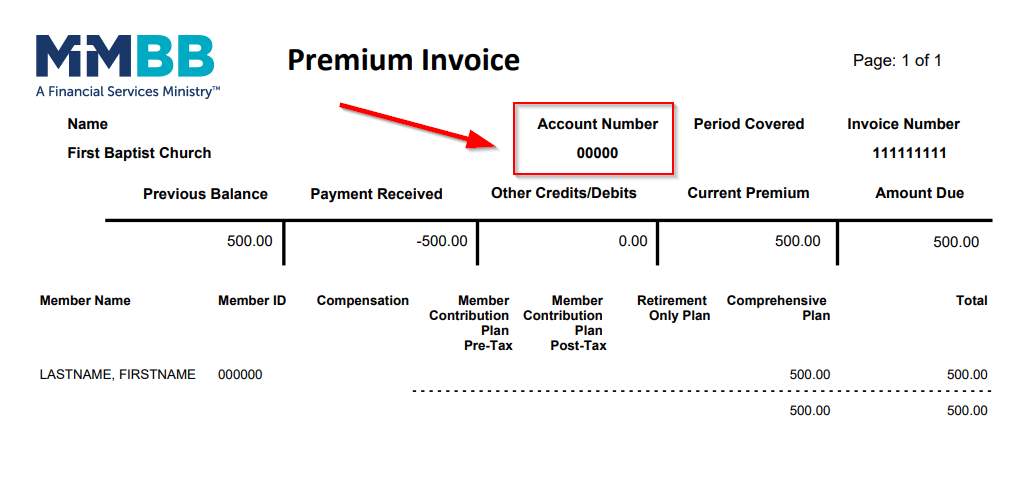The Markets (as of market close April 28, 2023)
Stocks ended April generally higher, despite several lackluster sessions along the way. Each of the benchmark indexes listed here gained ground over their March closing values, except for the small caps of the Russell 2000. Investors spent most of April weighing positive news on corporate earnings against concerns about the financial strength of regional banks and the Federal Reserve's next move relative to interest rates as it continues to battle inflation. The Dow enjoyed its best month since January. The Global Dow and the large caps of the S&P 500 also gained at least 1.5%. The Nasdaq barely eked out a gain on the heels of a strong last week of April.
Solid corporate earnings in the first quarter helped provide momentum for stocks. As of the end of April, roughly 79% of the S&P 500 companies that reported earnings have exceeded estimates. According to FactSet, about half of the S&P 500 companies have recorded their best performance relative to analyst expectations since the fourth quarter of 2021. Some analysts now expect first-quarter earnings for S&P 500 companies to decline 1.9% from a year ago, which is much better than the 5.1% drop expected at the start of April.
Several market sectors posted solid gains in April, while others closed the month lower. Consumer staples, health care, communication services, utilities, energy, and financials closed higher, while consumer discretionary, industrials, materials, information technology, and real estate ended lower.
Manufacturing activity rebounded from a moribund February, as it picked up some steam in March. Durable goods orders increased in March after falling in each of the previous two months. The purchasing managers' index rose for the third straight month in March, but remained below 50.0, which indicates contraction. Services, on the other hand, expanded into positive territory, as the services PMI™ increased to 52.6 in March.
Inflationary indicators showed price pressures may be easing. Both the Consumer Price Index and the Personal Consumption Expenditures Price Index inched up 0.1% in March.
Bond prices edged higher in April, with yields dipping lower. Ten-year Treasury yields slipped 4 basis points from March. The 2-year Treasury yield ended the month at 4.00%. The dollar declined against a basket of world currencies. Gold prices ended April higher but slid below $2,000.00 per ounce where they spent much of the month.
Crude oil prices increased in April after falling in each of the previous five months. Oil prices have fallen due to an unusually warm winter in the United States and Europe. OPEC+ has indicated that it will cut production in the coming months, which may impact prices moving into the summer months. The retail price of regular gasoline was $3.656 per gallon on April 24, $0.235 higher than the price a month earlier but $0.451 lower than a year ago.
MARKET SUMMARY
| MARKET/INDEX |
2022 CLOSE |
PRIOR MONTH |
AS OF 04/28 |
MONTHLY CHANGE |
YTD CHANGE |
| DJIA |
33,147.25 |
33,274.15 |
34,098.16 |
2.48% |
2.87% |
| NASDAQ |
10,466.48 |
12,221.91 |
12,226.58 |
0.04% |
16.82% |
| S&P 500 |
3,839.50 |
4,109.31 |
4,169.48 |
1.46% |
8.59% |
| RUSSELL 2000 |
1,761.25 |
1,802.48 |
1,768.99 |
-1.86% |
0.44% |
| GLOBAL DOW |
3,702.71 |
3,919.85 |
3,984.56 |
1.65% |
7.61% |
| FED. FUNDS |
4.25%-4.50% |
4.75%-5.00% |
4.75%-5.00% |
0 bps |
50 bps |
| 10-YEAR TREASURIES |
3.87%s |
3.49% |
3.45% |
-4 bps |
-42 bps |
| US DOLLAR-DXY |
103.48 |
102.59 |
101.67 |
-0.90% |
-1.75% |
| CRUDE OIL-CL=F |
$80.41 |
$75.57 |
$76.73 |
1.54% |
-4.58% |
| GOLD-GC=F |
$1,829.70 |
$1,987.80 |
$1,997.90 |
0.51% |
9.19% |
Chart reflects price changes, not total return. Because it does not include dividends or splits, it should not be used to benchmark performance of specific investments.
Latest Economic Reports
- Employment: Job growth remained strong in March with the addition of 236,000 new jobs compared with an average monthly gain of 334,000 over the prior six months. In March, notable job gains occurred in leisure and hospitality, government, professional and business services, and health care. The unemployment rate edged down 0.1 percentage point to 3.5%. In March, the number of unemployed persons fell by 97,000 to 5.8 million. The employment-population ratio, at 60.4%, increased by 0.2 percentage point, while the labor force participation rate, at 62.6%, edged up 0.1 percentage point from the previous month. Both measures have shown little net change since early 2022. In March, average hourly earnings increased by $0.09 to $33.18. Over the past 12 months ended in March, average hourly earnings rose by 4.2%, lower than the 4.6% increase for the year ended in February. The average workweek decreased by 0.1 hour to 34.4 hours in March.
- There were 230,000 initial claims for unemployment insurance for the week ended April 22, 2023. The total number of workers receiving unemployment insurance was 1,858,000. By comparison, over the same period last year, there were 207,000 initial claims for unemployment insurance, and the total number of claims paid was 1,521,000.
- FOMC/interest rates: The Federal Open Market Committee did not meet in April. However, the Committee met during the first week of May, when it raised interest rates by 25 basis points.
- GDP/budget: Rising interest rates and accelerating inflation are beginning to impact the U.S. economy. The gross domestic product increased 1.1% in the first quarter, according to the initial estimate from the Bureau of Economic Analysis. GDP rose 2.6% in the fourth quarter. The deceleration in first-quarter GDP compared to the previous quarter primarily reflected downturns in private inventory investment and nonresidential fixed investment. Personal consumption expenditures rose 3.7% in the first quarter compared to a 1.0% increase in the fourth quarter. Consumer spending on long lasting durable goods jumped 16.9% in the first quarter after decreasing 1.3% in the prior quarter. Spending on services rose 2.3% (1.6% in the fourth quarter). Nonresidential fixed investment increased 0.7% after climbing 4.0% in the fourth quarter. Residential fixed investment fell 4.2% in the first quarter, significantly better than the 25.1% decrease in the fourth quarter. Exports increased 4.8% in the first quarter, following a decrease of 3.7% in the fourth quarter. Imports, which are a negative in the calculation of GDP, increased 2.9% in the first quarter after declining 5.5% in the previous quarter. Consumer spending, which accounted for about 70.0% of GDP, rose 1.0% in the fourth quarter compared to an increase of 2.3% in the third quarter. Consumer prices increased 4.2% in the first quarter compared to a 3.7% advance in the fourth quarter. Excluding food and energy, consumer prices advanced 4.9% in the first quarter (4.4% in the fourth quarter).
- March saw the federal budget deficit come in at $378.1 billion, $115.7 billion over the February deficit and $185.5 billion above the March 2022 deficit. The deficit for the first six months of fiscal year 2023, at $1.1 trillion, is $432.5 billion more than the first six months of the previous fiscal year. In March, government receipts totaled $313.2 billion and $2.0 trillion for the current fiscal year. Government outlays were $691.3 billion in March and $3.1 trillion through the first six months of fiscal year 2023. By comparison, receipts in March 2022 were $315.2 billion and $2.1 trillion through the first six months of the previous fiscal year. Expenditures were $507.8 billion in March 2022 and $2.8 trillion through the comparable period in FY22.
- Inflation/consumer spending: Inflationary pressures finally may be slowing. According to the latest Personal Income and Outlays report, the Personal Consumption Expenditures Price Index increased 0.1% in March and 4.2% since March 2022. Prices excluding food and energy also advanced 0.3%, following increases of 0.3% in February and 0.6% in January. Prices for goods fell 0.2%, while prices for services increased 0.2% in March. Prices for food dipped 0.2%, while energy prices slid 3.7%. Since March 2022, consumer prices for food increased 8.0% and energy prices declined 9.8%. Personal income rose 0.3% in March, the same increase as in the previous month. Disposable personal income increased 0.4% in March after advancing 0.5% in February. Consumer spending was flat in March after climbing 0.1% the previous month.
- The Consumer Price Index inched up 0.1% in March after increasing 0.4% in February. Over the 12 months ended in March, the CPI advanced 5.0%, down from 6.0% for the year ended in February. Excluding food and energy prices, the CPI rose 0.4% in March and 5.6% over the last 12 months. Prices for shelter, up 0.6%, were by far the largest contributor to the March CPI increase, which was more than offset by a 3.5% decline in energy prices. In March, food prices were flat, although they're up 8.5% over the last 12 months. For the 12 months ended in March, energy prices decreased 6.4% and prices for shelter advanced 8.2%.
- Prices that producers receive for goods and services fell 0.5% in March, the largest monthly decline since April 2020. Producer prices increased 2.7% for the 12 months ended in March, the smallest 12-month increase since the period ended January 2021. In March, the Producer Price Index saw prices for both goods (-1.0%) and services (-0.3%) decrease. Producer prices less foods, energy, and trade services edged up 0.1% in March after increasing 0.2% in the previous month. Prices less foods, energy, and trade services advanced 3.6% for the year ended in March after increasing 4.5% from the 12 months ended in February.
- Housing: Sales of existing homes decreased 2.4% in March, with monthly sales declining in three of the four major U.S. regions, while sales were steady in the Northeast. Since March 2022, existing-home sales dropped 22.0%. According to the report from the National Association of Realtors®, a dearth of inventory, increasing home prices, and rising mortgage interest rates have contributed to the decline in sales of existing homes. The median existing home price was $375,700 in March, 3.3% higher than the February price but 0.9% lower than the March 2022 price. Unsold inventory of existing homes represents a 2.6-month supply at the current sales pace, unchanged from the February pace. Sales of existing single-family homes dropped 2.7% in March and 21.1% from March 2022. The median existing single-family home price was $380,000 in March, up 3.2% from February but 1.4% lower than the March 2022 price.
- New single-family home sales advanced in March, climbing 9.6% and marking the fifth consecutive monthly increase. However, sales are down 3.4% from a year earlier. The median sales price of new single-family houses sold in March was $449,800 ($433,200 in February). The March average sales price was $562,400 ($501,800 in February). The inventory of new single-family homes for sale in March decreased to 7.6 months, down from 8.4 months in February.
- Manufacturing: Industrial production rose 0.4% in March after being flat in February. Manufacturing and mining each decreased 0.5% in March and were 1.1% below their respective year-earlier levels. Utilities, on the other hand, rose 8.4% in March, as the return to more seasonal weather after a mild February boosted the demand for heating. In March, total industrial production was 0.5% above its year earlier level. The major market groups posted mixed results in March. Nondurable consumer goods, business supplies, and energy materials all recorded notable gains as a result of the jump in the output of utilities. Defense and space equipment posted the only other gain, increasing 0.8%. Construction supplies recorded the largest drop (-1.8%), followed by business equipment (-1.0%), durable consumer goods (-0.9%), and non-energy materials (-0.5%).
- March saw new orders for durable goods increase 3.2% after decreasing 1.2% and 5.0% in February and January, respectively. New orders for transportation equipment led the overall increase, advancing 9.1% in March after falling in each of the previous two months. Excluding transportation, new orders inched up 0.3% in March. Excluding defense, new orders increased 3.5%. Over the past 12 months, new orders for durable goods have increased 3.3%.
- Imports and exports: March saw both import and export prices edge lower. Import prices fell 0.6%, the largest one-month decline since November 2022. Import prices have not advanced since June 2022, with the exception of a 0.1% increase in December. Prices for U.S. imports declined 4.6% over the past year, the largest 12-month drop since the index declined 6.3% in May 2020. Import fuel prices decreased 2.9% in March and have not recorded a one month advance since June 2022. Nonfuel import prices declined 0.5% in March after advancing 0.9% in each of the three previous months. Export prices fell 0.3% in March, the first one month drop since December 2022. Lower prices in March for agricultural exports and nonagricultural exports each contributed to the overall decrease. Export prices decreased 4.8% for the year ended in March, the largest 12 month decline since a 6.7% drop from May 2019 to May 2020.
- The international trade in goods deficit narrowed more than expected in March, with exports outpacing imports. The trade in goods deficit decreased $7.4 billion, or 8.1%, from the February deficit. Exports of goods for March were $172.7 billion, $4.9 billion, or 2.9%, more than February exports. Imports of goods were $257.3 billion in March, $2.5 billion, or 1.0%, below February. The March increase in exports reflected gains in most major categories, including autos (4.3%), consumer goods (2.0%), and industrial supplies (6.4%). Foods, feeds, and beverages fell 4.5%. In March other goods (-3.3%), capital goods (-2.9%), and industrial supplies (-2.7%), contributed to the overall decline in imports of goods.
- The latest information on international trade in goods and services, released April 5, is for February and shows that the goods and services trade deficit was $70.5 billion, an increase of 2.7% from the January deficit. February exports were $251.2 billion, 2.7% lower than January exports. February imports were $321.7 billion, 1.5% below January imports. For the 12 months ended in February, the goods and services deficit decreased 20.3%. Exports increased 10.8%, while imports increased 2.2%.
- International markets: The combined economic output of the 20 Eurozone countries rose 0.3% over the first quarter of 2023, following a 0.2% decline in the final quarter of last year. Europe's economy has shown resilience, despite the ongoing war in Ukraine, inflation that is outpacing the European Central Bank's 2.0% target, and rising interest rates. A mild winter and natural gas imports from the U.S. and other countries helped lower energy prices. China also enjoyed an economic rebound during the first quarter of the year. China's economy expanded at an annualized rate of 4.5%, bolstered by China's relaxing of Covid-related restrictions. For April, the STOXX Europe 600 Index increased 1.9%; the United Kingdom's FTSE advanced 3.1%; Japan's Nikkei 225 Index gained 2.9%; and China's Shanghai Composite Index rose 1.5%.
- Consumer confidence: The Conference Board Consumer Confidence Index® decreased in April to 101.3, down from 104.0 in March. The Present Situation Index, based on consumers' assessment of current business and labor market conditions, increased to 151.1 in April, up from 148.9 in the previous month. The Expectations Index, based on consumers' short term outlook for income, business, and labor market conditions, fell to 68.1 in April from 74.0 in March. According to the Conference Board's report, the Expectations Index has remained below 80.0, the level associated with a recession within the next year, since February 2022.
Eye on the Month Ahead
The Federal Open Market Committee (FOMC) met at the beginning of May. The Committee raised interest rates by 25 basis points. The April job figures are released in early May. The job market has yet to show signs of cooling, although most predict job growth will wane this year.
Data sources: Economic: Based on data from U.S. Bureau of Labor Statistics (unemployment, inflation); U.S. Department of Commerce (GDP, corporate profits, retail sales, housing); S&P/Case-Shiller 20-City Composite Index (home prices); Institute for Supply Management (manufacturing/services). Performance: Based on data reported in WSJ Market Data Center (indexes); U.S. Treasury (Treasury yields); U.S. Energy Information Administration/Bloomberg.com Market Data (oil spot price, WTI, Cushing, OK); http://www.goldprice.org (spot gold/silver); Oanda/FX Street (currency exchange rates). News items are based on reports from multiple commonly available international news sources (i.e. wire services) and are independently verified when necessary with secondary sources such as government agencies, corporate press releases, or trade organizations. All information is based on sources deemed reliable, but no warranty or guarantee is made as to its accuracy or completeness. Neither the information nor any opinion expressed herein constitutes a solicitation for the purchase or sale of any securities, and should not be relied on as financial advice. Past performance is no guarantee of future results. All investing involves risk, including the potential loss of principal, and there can be no guarantee that any investing strategy will be successful.
The Dow Jones Industrial Average (DJIA) is a price-weighted index composed of 30 widely traded blue-chip U.S. common stocks. The S&P 500 is a market-cap weighted index composed of the common stocks of 500 largest, publicly traded companies in leading industries of the U.S. economy. The NASDAQ Composite Index is a market-value weighted index of all common stocks listed on the NASDAQ stock exchange. The Russell 2000 is a market-cap weighted index composed of 2,000 U.S. small-cap common stocks. The Global Dow is an equally weighted index of 150 widely traded blue-chip common stocks worldwide. The U.S. Dollar Index is a geometrically weighted index of the value of the U.S. dollar relative to six foreign currencies. Market indices listed are unmanaged and are not available for direct investment.
IMPORTANT DISCLOSURES
Broadridge Investor Communication Solutions, Inc. does not provide investment, tax, legal, or retirement advice or recommendations. The information presented here is not specific to any individual’s personal circumstances.
To the extent that this material concerns tax matters, it is not intended or written to be used, and cannot be used, by a taxpayer for the purpose of avoiding penalties that may be imposed by law. Each taxpayer should seek independent advice from a tax professional based on his or her individual circumstances.
These materials are provided for general information and educational purposes based upon publicly available information from sources believed to be reliable — we cannot assure the accuracy or completeness of these materials. The information in these materials may change at any time and without notice.








